What is the first thing you want when you think about web analytics?
Tools!
Of course tools. What to do, where to start, what's cool.
I was reflecting on that recently and thought it was incredible that in all my years of writing this blog I have never written a blog post, not one single one (!!), recommending tools for the complete web analytics 2.0 spectrum.
Well that ends today.
My goal is to give you a list of tools that I use in my everyday life as a practitioner (you'll see many of them implemented on this blog). You are not going to use all of them all at the same time (or with every client), but 1. it is good to know what is out there and 2. to be awesome you are likely to use one from each category.
[Disclosure:] I am the co-Founder of Market Motive Inc and the Analytics Evangelist for Google. I do not have financial or equity or any other stake in any company mentioned in this blog post (except Google). None of these tools vendors have any relationship with Market Motive either. They are on this list because IMHO they provide value and are better than their competition. [/Disclosure]
Before we jump into tools a few key bits of context, after all context is queen!
First Bit Of Context. . . Web Analytics 2.0.
This blog post is about web analytics 2.0. Not just clickstream analysis.
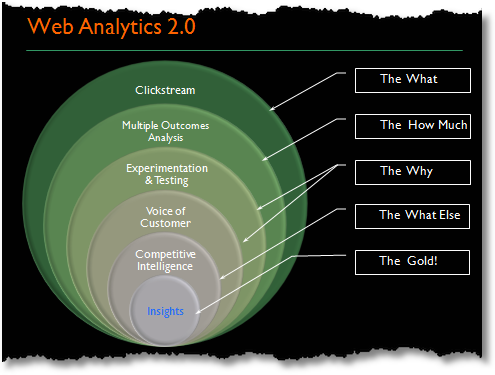
As defined in my second book Web Analytics 2.0 is:
1. the analysis of qualitative and quantitative data from your website and the competition,
2. to drive a continual improvement of the online experience of your customers and prospects,
3. which translates into your desired outcomes (online and offline)
An expansive view of what it means to use data online, both from the type of data perspective and the kind of desired impact perspective.
Second Bit Of Context. . . Multiplicity.
Given the definition above, I am a firm believer in Multiplicity.
Every single company, regardless of size, will require multiple tools to understand the performance of its website, happiness of its customers and glean key context from competitors and ecosystem evolution.

The quest for a "single source of the truth" on the web is futile.
Actually let me rephrase that. . . the quest for a single tool/source to answer all your questions will ensure that your business will end up in a ditch, and additionally ensure that your career (from the Analyst to the web CMO) will be short-lived.
Sorry.
You should know upfront that you are going to fail, often spectacularly, if you don't embrace the fact that you have many complicated questions to answer, from many different sources.
To be an Analysis Ninja, and part of a successful web business, embrace Web Analytics 2.0 and embrace Multiplicity. Use a clickstream source when you have to, switch to testing to move beyond HiPPO's and inferences from click data, invite customers on a regular basis share feedback with you using surveys and usability, and poke and prod your competitor's and ecosystem performance to know what to do more of and what to do less of and what you have been blind to.
Do that. Work hard. Win big. Rinse, repeat.
Third Bit Of Context. . . Don't Be Scared: Prioritize.
Many people get really scared and run for the hills when they first put Web Analytics 2.0 and Multiplicity together.
Don't be.
Depending on the size of your company (translation: resources available and what's impactful and doable) here is the priority order that I recommend for you to execute your web analytics tools strategy right. . .

Not everybody should do everything in the same order. In my humble experience the above order works best for small, medium and large sized companies.
The result of going in a specific order is that this does not have to all be done overnight. You can take your time and evolve over time.
For more on why I recommend this specific order please see my second book, Web Analytics 2.0, which many of you already have.
Fourth Bit Of Context. . . The 10/90 Rule!
I can't ever talk about tools without reminding you of my 10/90 rule for magnificent success in web analytics.
First presented at an eMetrics summit in 2005 the 10/90 rule was borne out of my observations of why most companies fail miserably at web analytics.
Put simply it states:
If your have a budget of $100 to make smart decisions about your websites… invest $10 in tools and vendor implementation and spend $90 on Analysts with big brains.
Summary: Its the people.

You may not go with precisely 90, that is ok. But overinvest in people and everything that is required to make those people successful: invest in process, invest in their training, invest in large monitors for them, invest in backing them up against senior management, invest in involving them in key business strategy meetings, invest in… you catch my drift).
The coolest tools, the really expensive tools, will deliver diddly squat for your business. They'll simply puke data faster and, if you implement them right, more efficiently.
It's your investment in the 90 that will deliver glory.
People matter.
With those minor caveats, and what it takes to be successful refreshers, I am really excited to tell you all about tools!
: )
The Best Web Analytics 2.0 Tools For Maximum Awesomeness!
Let us break this list into the components of Web Analytics 2.0 so you have some reference as to where each item fits (and this will also make it easier for you to pick tools for the priority order referenced in Context #3 above).
Clickstream Analysis Tools [The "What"]
To many people the clickstream world is all there is to the web analytics world. It is without a doubt the largest source of data you'll access.
There are hundreds (I kid you not) of clickstream tools, I recommend you keep your life on the straight and narrow and pick one, just one (!), of these three tools:
~ Yahoo! Web Analytics
~ Google Analytics
~ Piwik
Yahoo! and Google provide world class web analytics tools for free.
Custom reporting, advanced segmentation, advanced rich media tracking, auto-integration with search engine PPC campaigns, advanced mathematical intelligence, algorithmic data sorting options, complete ecommerce tracking, super scalable sophisticated data capture methods such as custom variables, open free and full API access to the data, loads and loads and loads of developer applications to do cool data visualizations, data transformations, external data integrations and more. I am forgetting the other 25 features these tools provide for free.
Additionally if you look at the massive progress these two tools have made in the last 24 months there is hardly anything, more like _nothing_, they can't do that other vendors, free or paid, can do.
There would have to be an overwhelming preponderance of evidence showing that your company is magnificently unique, extremely special and with such incredibly uncommon needs that you need to go with any other clickstream tool (including paid clickstream tools from Omniture, CoreMetrics, Unica, WebTrends or anyone else).

If you have never done web analysis, start with one of these two.
If you have always done analysis and only use clickstream tools like Site Catalyst or Coremetrics Analytics or WebTrends Analytics then switch to one of these two tools and invest the money in Analysts (and wait just a couple months for your mind to be blown by valuable insights).
This is not to say paid web analytics tools (that do more than just clickstream analysis) don't provide value.
If after rigorous analysis you have determined that you have evolved to a stage that you need a data warehouse then you are out of luck with Yahoo! and Google, get a paid solution. If you can show ROI on a DW it would be a good use of your money to go with Omniture Discover, WebTrends Data Mart, Coremetrics Explore.
If you have evolved to a stage that you need behavior targeting then get Omniture Test and Target or Sitespect. Good use of your money.
Etc etc.
Spending money on the base solutions from paid vendors is a very poor use of your money.
IMPORTANT: Many people think it is hard to get the free Yahoo! Web Analytics. Not true. There are three specific ways to get Yahoo! Web Analytics. Read this: How do I get a Yahoo! Web Analytics account?
If you are technically oriented, don't trust either Yahoo! or Google and up for an adventure I highly recommend you consider using Piwik.

It is a wonderful solution. It has been constantly updated in the two years I have watched it. Piwik provides you plenty of capability to explore your inner technical unicorn while allowing you to answer business questions.
Three tools. Pick one. Move on with your analytical lives. Move from a data collection obsession and develop a crush on data analysys.
Special Recommendations:
Any website that provides an RSS feed would do very well to use Feedburner.
There is a lot of clickstream activity that is happening inside your RSS feed (and away from your website). Without Feedburner you have zero insights into that behavior of your most precious customers, those who are pulling your site/blog/marketing without you having to hound them.
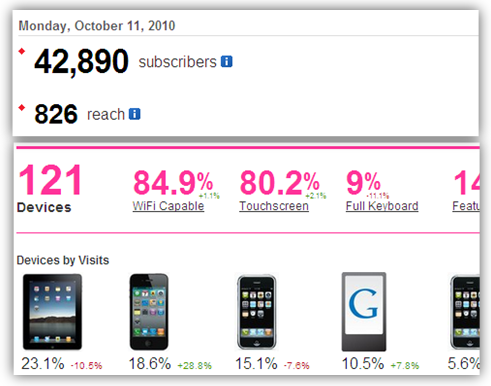
Most web analytics tools (including all the ones mentioned above) provide not great data about consumption of your website on mobile devices. By default they only work with JavaScript tags (Percent Mobile will also capture behavior on non JavaScript enabled phones) and even then their databases of phone attributes and carrier attributes are quite poor.
So if you want really good mobile behavior data (in a separate but useful silo) then go get Percent Mobile. There is a free starter edition if you just want to play with it.
~ Google Webmaster Tools / Bing Webmaster Tools
Most web analysts are not responsible for SEO Analytics, and it is such a shame. A huge vast majority of clicks coming from search engines continue to be organic clicks (which is why I love and adore search engine optimization).
Any web analytics on your site will tell you how many clicks came to you from a search engine. But do you know your organic impression share for your top keywords? You can only get that from Webmaster tools (I know, I know, it would look really good in Google Analytics!).
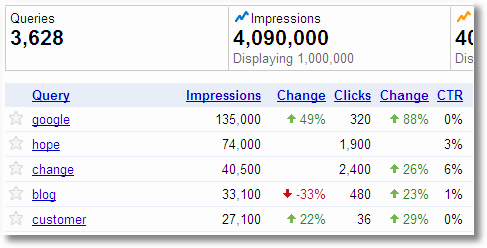
Besides that to me SEO is an important part of marketing. I consider it my business as a web analyst, to report on how well the site is being indexed, keywords it is showing up for (but not getting clicks for), changes in trends for impression share and clicks on search engines (via the brand spanking new Google Webmaster Tools report) etc. I consider that to be web analytics.
You may not. But I believe you'll do your company a great service if you do, and now you know where to go to get started. :)
Outcomes Analysis Tools [The "How Much"]
Most outcomes analysis you will do in identifying your macro and micro conversions (for profit or non profit sites, government or ecommerce) will happen inside other tools mentioned in this blog post.
For example you'll configure goals and ecommerce tracking in Yahoo! Web Analytics or Google Analytics or Piwik. You'll measure Task Completion Rate in 4Q (below). You'll measure Share of Search using Insights for Search (below).
Or, if you truly want my admiration, you'll compute Profit and Margin for your campaigns in Microsoft Excel or using the most relevant database query.
So no specific tools recommendation here. Only a plea to obsessively obsess about measuring outcomes and compute economic value, not just revenue. [See Quantifying Economic Value on page 159 of Web Analytics 2.0.]
Special Recommendations:
I'll make two types of multi-channel analytics outcomes recommendations here.
If you have a phone number on your site then you would be very well-advised to implement a phone call tracking solution on your website.
~ Mongoose Metrics
~ ifbyphone
I know Mongoose Metrics a bit more and have been impressed with their solution and evolution over the last couple of years. My trusted friends have been equally impressed with ifbyphone.
It is pretty easy to integrate phone outcomes data with your web analytics solution. See this video by ifbyphone: Google Analytics Phone Call Integration or this page on the MongooseMetrics site: AccuTrack. These solutions also integrate with other web analytics tools.
![]()
If you spend any decent amount of money on email, search or display campaigns and have a phone call option then it is pretty criminal not to use one of these guys to get a really good understanding of offline conversions. Without them you might be missing such an important part of the "what have we actually accomplished on our website" equation.
If you offer a live chat option on your website then outcomes can also be measured in a lovely manner using the LivePerson solution. With simple configuration updates in the tools you'll create a custom report showing you Source/Campaign, Visits –> Live Chat % –> Goal Conversion Rate –> Per Visit Goal Value.
![]()
Sweetness.
Experimentation and Testing Tools [The "Why" – Part 1]
I firmly believe that God created the internet so we could fail faster. I know of no other way to achieve one's global maxima on the web.
The fact that this is a great way to prove HiPPOs right or wrong is a bonus. The fact that this is perhaps the most amazing way to get your customers involved in creating win-win offers/content/experiences/outcomes is the cherry on top of the bonus.
GWO is free (you don't have to use AdWords or Google Analytics to use it) and is perhaps all you need as a robust A/B and Multivariate (MVT) testing solution.
Here's a free guide – 26 pages – to use the website optimizer optimally: PDF Download: The Techie Guide to Google Website Optimizer.
If you need ideas of what to test: Experiment or Die. Five Reasons And Awesome Testing Ideas.
No serious web analytics program in any company is complete without robust and persistent testing. None. Not a single one.
Special Recommendation:
If you want to jump into testing very very fast and start doing A/B testing tonight (I am not kidding: tonight!) then I recommend using Optimizely.
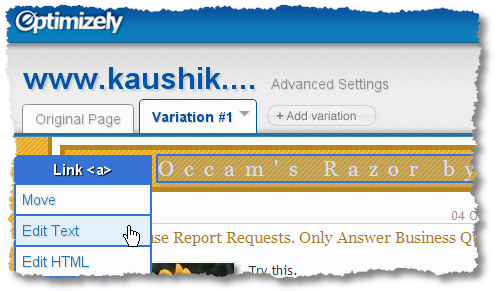
Slight amount of technical knowledge will be a plus, but it is really really easy to get started. Just go to their site and type in your URL in the blue box and hit the green button and you'll see what I am talking about. You'll be setting up you A/B test in 5 mins.
They even have a Platinum support plan where you get the CEO's direct cell phone number! How can you not totally love that? : )
~ AdWords Campaign Experiments by Google
I wish I could put into words how much I love ACE (AdWords Campaign Experiments). It is truly a blessing for anyone that does paid search marketing.
So many companies large and small truly suck at doing AdWords properly. And it does not matter if they use a large brand name Agency. This sucking can be solved immediately and awesomely by using ACE.
Adgroups and match types and content and copy and URLs and keywords and negatives and positives and bid prices and so many levers to pull to improve Impressions, CTRs and ROI of your AdWords campaigns.

Now you don't have to do the super lame before and after “experiments”, you can do true test and control experiments and learn how to win, and win big, at this AdWords thing you are spending so much (or so little) money on.
I hate to be a bearer of bad news but if your company or Agency is not using ACE every day to make you a ton more money, then fire someone.
Here's all you need to know about ACE: AdWords Campaign Experiments Videos & Guides.
Voice of Customer Tools [The "Why" – Part 2]
It is quite incorrect to believe that by analyzing the clicks of visitors to your website that you suddently have an ability to capture "voice of customer". That would be like trying to talk to your mom while holding a banana to your ear instead of a telephone.
I have been profoundly humbled by how much one can learn by using qualitative methods to collect VOC.
Of the hundreds of online survey providers out there, here are two of my current favorites:
~ 4Q by iPerceptions
~ KissInsights
I am extremely biased towards sensible short surveys, versus many people's preferred option of a 42 question puke "survey". I have come to realize that asking just a few right questions translates into a respect for the website visitor's time, an extreme focus at your end, and, blessedly, action by your company based on VOC.
4Q is a "site level survey." By default you ask just four questions (though you can add two more optional questions) when people exit your site. It provides the Key Performance Indicator that I consider to be the holiest of the holy in web analytics: Task Completion Rate (segmented by Primary Purpose).
If you want to see how 4Q looks and works click here.

KissInsights is a "page level survey." You ask one question (how can you not love that!) and have an ability to get a yes, no or open text answer. The survey invite is unobtrusive. You can control the amount of time spent on a page before the survey shows up, you can add conditional logic, and so much more, to the survey invitation process.
If you want to see how Kissinsights works just go to site and customize your own in a few seconds.
Both 4Q and KissInsights come with free starter solutions. Both are available in multiple languages. Each solves a different problem, and solves it very well.
Another great way to collect voice of customer (VOC) is to do usability studies. A recent sweet development is that you don't just have to rely on often expensive lab usability studies. You can conduct affordable, scalable and frequent online usability studies.
~ UserTesting.com
~ Loop11.com
For $39 a pop UserTesting.com allows you to specify the demographic and other attributes of the users you are most interested in and then have those users complete tasks you specify on your site. You get a video and a written summary of their experiences. Nothing more powerful than actual frustrated users right?
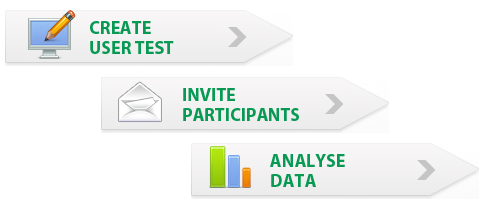
Loop11 is different in several small ways but the primary difference is that you pay a flat fee of $350 for each study while allows you to have to 1,000 participants and unlimited number of tasks. You are also in control of study participants and you can invite them via social media or a pop up on your site.
They also have a sweet demo, check it out here: Loop11 Participant Demo. The demo is a sweet way to convince your boss to give you money for a usability study (with either company! :)).
Finally one last VOC recommendation, this one very tactical and focused on single page optimization (vs. site and experience optimization with the voc tools outlined above).
On the surface it looks like a site for designers, but the reality is that this is a site for every Marketer, Analyst and pompous or humble HiPPO in the world.
You upload one of your pages and you have three options to collect feedback. You can get public feedback from their community of professionals (currently 8,000). You can get feedback, privately, from your company folks or current customers. Or finally (this is really cool especially if you are a small/medium sized company) you can get feedback from a Design, Usability and Marketing expert for a total of $300. How awesome!
If you want to see a sample of how this works check out this example, or many others on their site.
Now go look at your Top Landing Pages report, check out the pages with the highest bounce rates, upload them into Concept Feedback and stop stinking!
Special Recommendation:
Bounce has fewer features but I have to tell you I absolutely love how simple it is to set up and how lovely the UI is. Same thing as above: type the URL of a page on your site into Bounce, share the URL with others, get feedback.
Check out how it works on this page I have just created in Bounce for Market Motive.
Competitive Intelligence Tools [The "What Else"]
Two simple and powerful reasons for embracing, nay jumping into bed all naked, with competitive intelligence data:
1. Get context to your own performance vis-a-vis your competitors (the ones you know about and the ones you don't)
2. Analyze ecosystem trends, opportunities, failures, impact of your tv ads, emerging customer preferences and changes, and. . .
I could keep going on.

Here are tools I use on a daily basis:
~ Compete
~ Trends for Websites
~ Insights for Search
~ AdWords Keyword Tool
~ DoubleClick Ad Planner
[Before you use any of these tools please please please read this blog post: The Definitive Guide To (8) Competitive Intelligence Data Sources]
Compete is a great place to get quick data about US Visitors for any website. Compete uses a mix of data collection methods (read post above) which makes their data much better than many others. Notice at the bottom of the report that you also get top five referral and destination sites as well as search analytics. If you pay you get a lot more. If you think a website gets more than 50k unique visitors a month chances are their data is well reflected in Compete (for US visitors only).
Trends for Websites is the place I got to for worldwide visitor data for websites located in any part of the world. It uses one of the largest sources of data in the world and can be an excellent way to understand Traffic, Search Keywords, and Also Visited data for a Chinese site or one from Brazil or South Africa.
[Learn more about the types of analysis you can do: Competitive Intelligence Analysis: Google Trends for Websites]
Insights for Search is one of my secret crushes. I love the fact a common person like me can have access to the world's “database of intentions” for free. It's like having a hose directly plugged into humanity's brain and understand what it (or segment of it) is thinking, feeling, doing. I use Insights for Search to analyze industries, analyze share of search, emerging trends and, this might seem odd, where to do offline advertising based on consumer intent.
[Learn more about the types of analysis you can do: Competitive Intelligence Analysis: Google Insights for Search]
AdWords Keyword Tool is impressive not just because of the petabytes of data it mashes together with ease but also because it is a source that 1. helps me refine my search engine optimization (SEO) strategy 2. download all the specific user-typed long tail queries for optimal PPC targeting and 3. get insights into specific verticals or brands I care about or am currently analyzing.
[Learn more about the types of analysis you can do: Google's Search Based Keyword Tool: Monetize The Long Tail of Search]
DoubleClick Ad Planner is my go-to source for demographic and psychographic analysis for any website or, how amazing is this, the whole entire darn internet! And this is the most amazing part, you are about to have a minor orgasm, it is the only source in the world where you can marry user attributes (content consumed, demographic, psychographic etc) with their Search behavior! It is impressive to get that type of insight into users. It is silly to ever do a single display advertising campaign (via any company: Atlas, Yahoo!, DoubleClick, AOL, etc) without using the data in Ad Planner.
[Learn more about the types of analysis you can do: Competitive Intelligence Analysis: Google / DoubleClick Ad Planner]
Regardless of the size of your company and regardless of your title, a "lowly" Analyst or Senior Squirrel or Director of Analytics & Optimization, if you don't do competitive intelligence analysis you don't do analytics.
Miscellaneous Emerging Analytics Tools [The "What Else Could I Possibly Do"]
Yes you are right that in my Web Analytics 2.0 framework there is no category called "what else could I possibly do." I am glad you are paying attention. : )
Unfortunately for you and me daily evolution is the norm on the web. We are faced with new marketing and measurement challenges and opportunities every single day. Here are some tools that I use to measure the emerging bleeding edge of those challenging opportunities. . . .
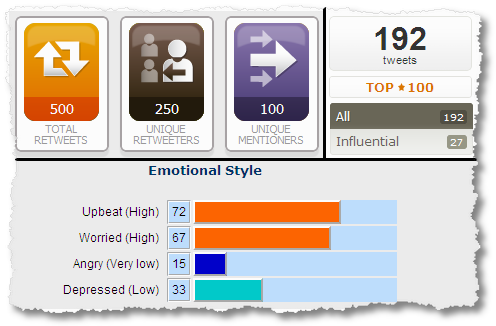
Twitter to me is a proxy of how data collection is changing and what the future of relevant metrics might look like. I explore that using these tools:
~ Klout
Klout has some of the cleanest metrics when it comes to measuring performance of a single twitter account. They've just added Facebook integration and measurement, a step in the direction of measuring our entire social presence.
~ Topsy
Topsy is a really good social search engine but I have found that it is the cleanest and most comprehensive when it comes to tracking the tweets and retweets of my blog posts (or pages on your site that can be tweeted/retweeted). Number of tweets about the page is now a key part of my Conversation Rate metric for any page on the site.
AnalyzeWords to me is what sentiment analysis should be like / might be like one day. Rather than a quest for a non-useful shortcut like "positive" – "negative" – "neutral", it offers a real nuanced psychological analysis of data. [Learn more: Sentiment Analysis]
Another tool that takes a similar, but different, approach is TweetPsych.
Finally a small peek into how lots and lots of data that is fragmented today, spread between your site analytics tools and lots of other sources out there, is going to come together and delight you. . .
A huge number of consumption of your content happens offsite (and hence is invisible to Omniture or WebTrends or IBM or Google Analytics). An even huger and scarier amount of influencing of your potential and current customers happens outside channels and locations where you exist. PostRank starts to bring all that together.

All your current website data (at least Google Analytics) and all your consumption and influence data from the social web. All in one place having a ménage à trois producing pretty babies. check them out, as you can see even from the cropped screenshot above, haivng all that data in one place transforms your understanding of success (or failure).
That's all I got for today. Phew!
Parting Words of Wisdom from a Practitioner.
I had promised tools and you got tools! Perhaps more than you cared for.
But do remember three very very important things:
1. You simply cannot survive in this world with a clickstream mental model. You have to embrace Web Analytics 2.0 and Multiplicity, or take a job in a different field because you'll be miserable in this one.
2. You don't have to use all the tools. See the priority map above. You should use at least three (again see the order in which you should implement them in the priority map) and be experimenting with one or two others.
3. If there is one thing you should be convinced of by now it is why following the 10/90 rule is so desperately and supremely important.
Every tool above is either free or has a limited free plan or is extremely affordable. Every single one is amongst the best in its class. And yet none would be useful unless you had a Michelle or a Amir or Enrique or Sasha who understands your business and has the drive to use the right tool intelligently to deliver actionable insights.
Happy Analytics!
Ok now its your turn.
Does your company have a clickstream web analytics strategy or a true Web Analytics 2.0 strategy? How many tools do you use on the website you are responsible for? Which of those are your favorites? Have a missed a truly exceptional tool in my list? Which of the above tools have you tried, and what's your experience with them? What is the tool you are dying to get, but has not yet been invented?
Please share your feedback / critique / thoughts / wisdom via comments.
Thanks.
PS: Ok ok ok. I know what you are asking for. Here's a handy dandy list of all the tools listed in this blog post:
+ Clickstream Analysis Tools [The "What"]
~ Piwik
Special Recommendations:
+ Outcomes Analysis Tools [The "How Much"]
+ Experimentation and Testing Tools [The "Why" – Part 1]
Special Recommendations:
+ Voice of Customer Tools [The "Why" – Part 2]
- ~ 4Q by iPerceptions
Special Recommendations:
+ Competitive Intelligence Tools [The "What Else"]
- ~ Compete
+ Miscellaneous Emerging Analytics Tools [The "What Else Could I Possibly Do"]
To infinity, and beyond!!

 Try this.
Try this.


